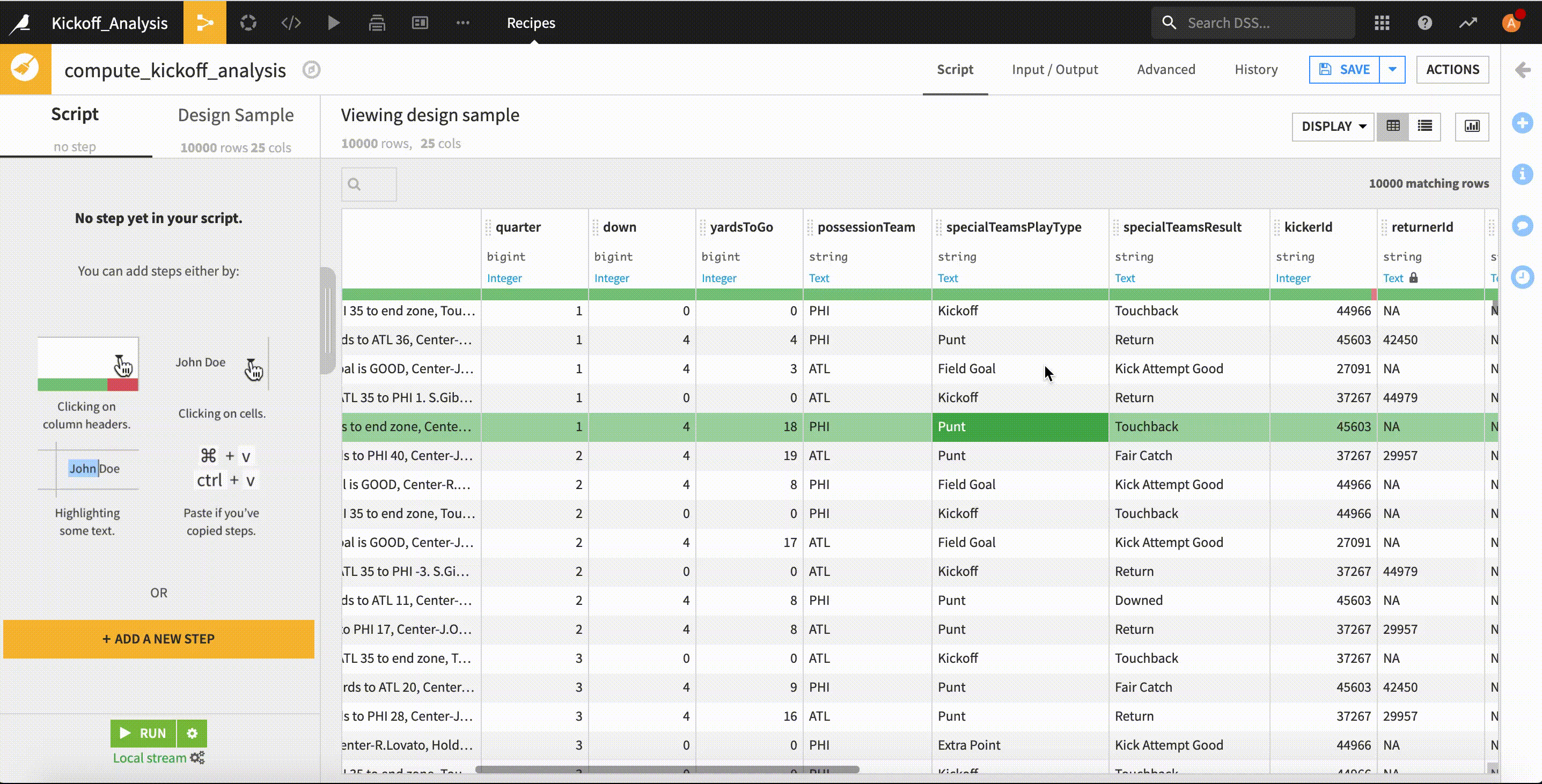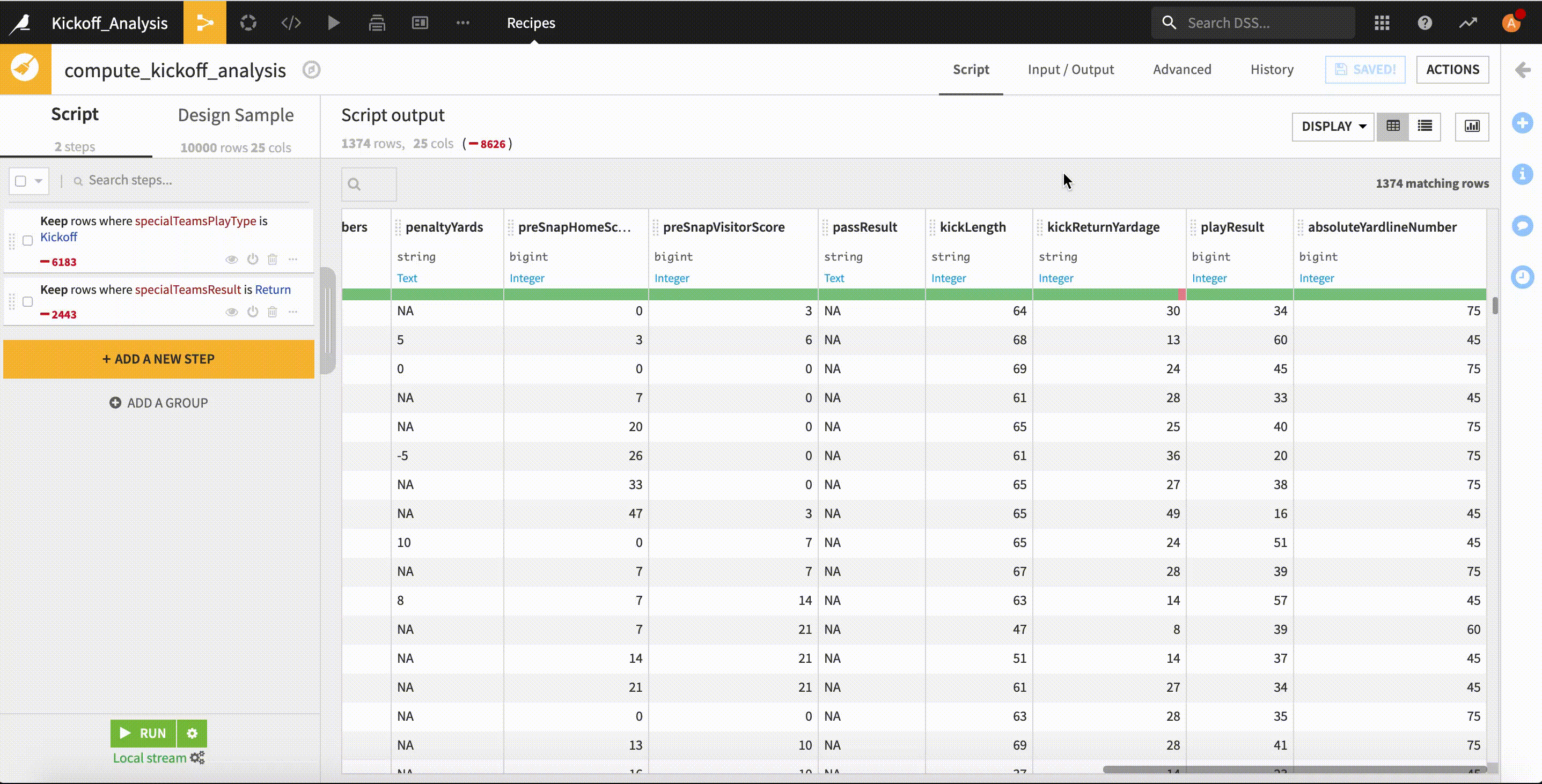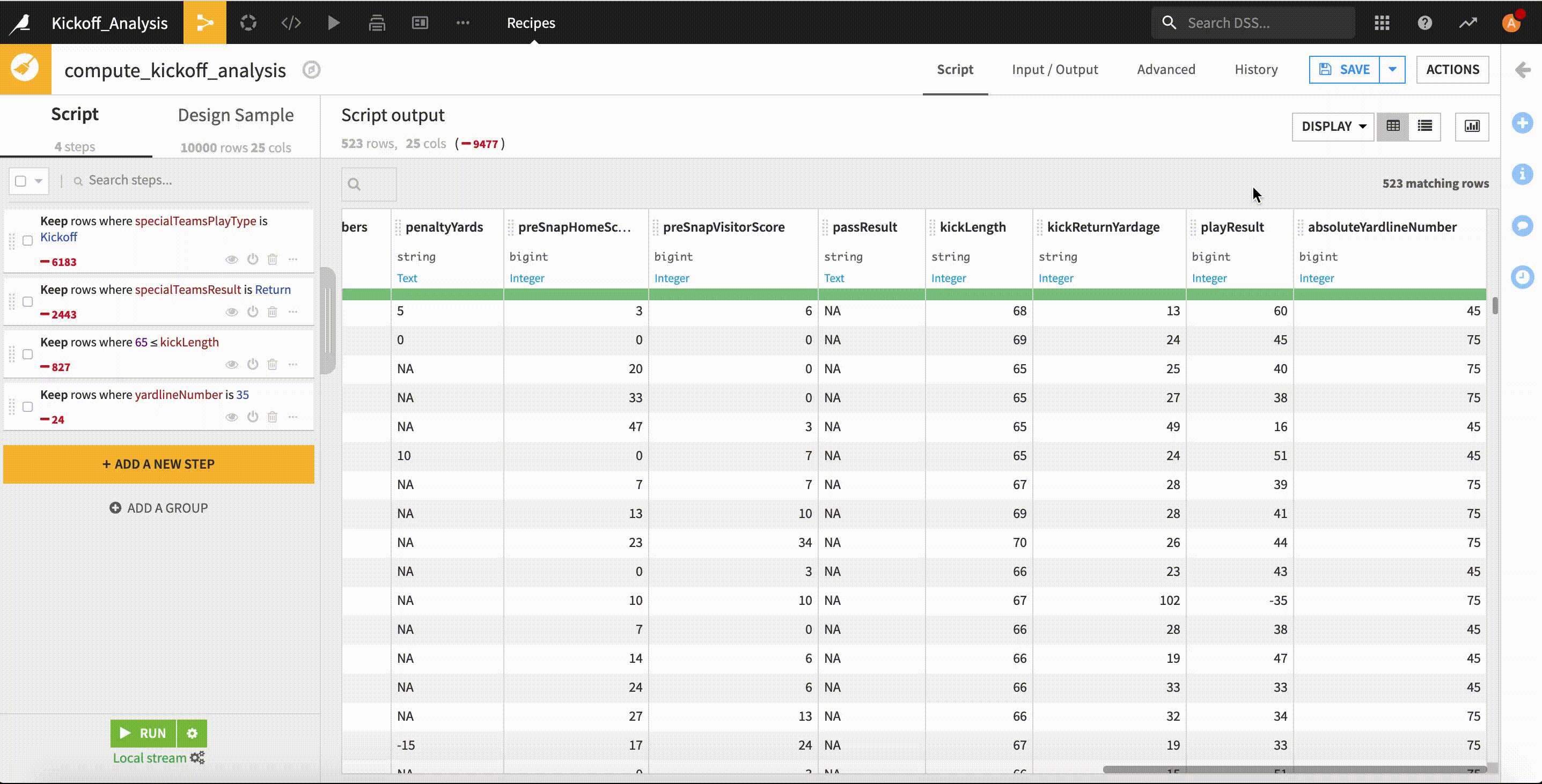The kickoff is one of the most overlooked plays in football because of how uneventful they usually tend to be, but just ask any Packers fan whether or not special teams should be taken more seriously. This blog post is entirely dedicated to kickoffs because I’ll aim to prove that teams make the wrong decision about them hundreds of times each and every season. While trying to prove this, I will also walkthrough how users of any skill level can clean, manipulate, and analyze football data using Dataiku!
Teams Should Take More Touchbacks
It is extremely rare for a team to return a kickoff for a touchdown. There were only nine kickoffs returned for a touchdown in the most recent season, about one for every 30 games. For the most part, the returning team is just trying to take the ball as far up the field as they can to make life for the offense easier. Keeping that objective in mind, teams should (almost) never return a kick out of the end zone.
Unless it is at the end of a half or a team has an exceptional kick returner, NFL teams should take a touchback every time they get the opportunity because when they take the ball out of the end zone, they return it to the 22-yard line on average (three yards behind the touchback line). Therefore, it is clearly more advantageous for them to just take the touchback! Let’s look at the data and investigate further.
Using Visual Recipes to Analyze Football Data
2021’s NFL Big Data Kaggle competition provided data from every special teams play from 2018-2021. The task then became dissecting that data down to just kickoffs that go into the end zone. Here is how we can accomplish this using just Dataiku’s visual tools.
Inside of a Prepare recipe, we first identify the type of special teams play we want to analyze (kickoffs) and just keep those rows. Second, we choose to keep just those kickoffs that were returned.

To remove any kicks that didn’t go into the end zone, we filter the data on just those kicks that traveled at least 65 yards and were taken from the 35-yard line.

The next part was a little trickier because the data is collected from the perspective of the kicking team, not the returning team. Therefore, we have to reverse engineer the variable, “playResult,” which is the net yards gained by the kicking team. A touchback is equivalent to a net gain of 40 yards. The higher the net gain, the better the result for the kicking team.
After removing outliers, the average net yards gained was 43.3! In other words, the average return taken out of the end zone ended up 3.3 yards behind where they could have had the ball had the returner simply not touched the ball! The returning team could have done absolutely nothing and be 3.3 yards better off on average than when they try to return the ball.

Accounting for Fumbles, Injuries, and Touchdowns
In addition to the findings outlined in the previous section, there are two more important considerations that help my argument: turnovers and injuries. Teams unnecessarily risk losing the ball and/or hurting their own players by returning a kickoff that travels into the end zone.
There were 523 kickoffs sent into the end zone returned by the kick returner in the past three seasons. The returner fumbled the ball nine times out of those 523 kickoffs, and they scored a touchdown three times. To find these numbers, we can use the Count occurrences processor inside of the Prepare Recipe.
If we consider all returned kickoffs, and not just the ones that went into the end zone, the kick returner fumbled the ball 53 times and scored a touchdown 16 times. A kick return is essentially 3 times more likely to result in a fumble than a touchdown, which only serves as another reason for teams not to take a kickoff out of the end zone.
Regarding injuries, kickoffs are very dangerous plays. So dangerous that the NFL changed the rules to try to reduce the number of injuries that would occur during those plays. The new rules seem to have curbed injuries because there are fewer returns overall. However, the rate of injuries on returned kicks has stayed the same. Therefore, not only is it disadvantageous for teams to return kickoffs out of the end zone for football reasons, but it is also disadvantageous because players are put at higher risk of serious injury.
Kickoff Strategy and Final Thoughts
If you think about kickoffs from the perspective of the kicking team, you quickly realize that teams should kick the ball as far as they can without it going into the end zone. Some teams have already implemented this strategy. However, some teams have not and, for the Buffalo Bills, kicking into the end zone literally cost them their season. Had they kicked or squibbed the ball into the field of play, Patrick Mahomes would have only gotten one play to get into field goal range, not two.
For the returning team, it makes little to no sense for a team to take a kickoff out of the end zone. Teams are likely to lose yardage, risk fumbling the ball, and/or put their players at risk of injury. I would even take this a few steps further. In my opinion, returning teams should let a kickoff sent to the 1 or 2-yard line hit the ground and let the momentum of the ball carry it into the end zone for a touchback. If we include kickoffs that travel to the 1 or 2-yard line, then the average kickoff is returned 2.6 yards behind the 25-yard line (the touchback line).
With Dataiku, we were able to use visual recipes and easy-to-perform data cleaning techniques to take a large football dataset and distill it down to analyze the exact type of plays we wanted. The simple data analysis we performed uncovered significant results. Teams are shooting themselves in the foot hundreds of times each year by not taking touchbacks more often. And, as the Green Bay Packers and Buffalo Bills realized this year, one special teams play can decide the fate of your entire season.





